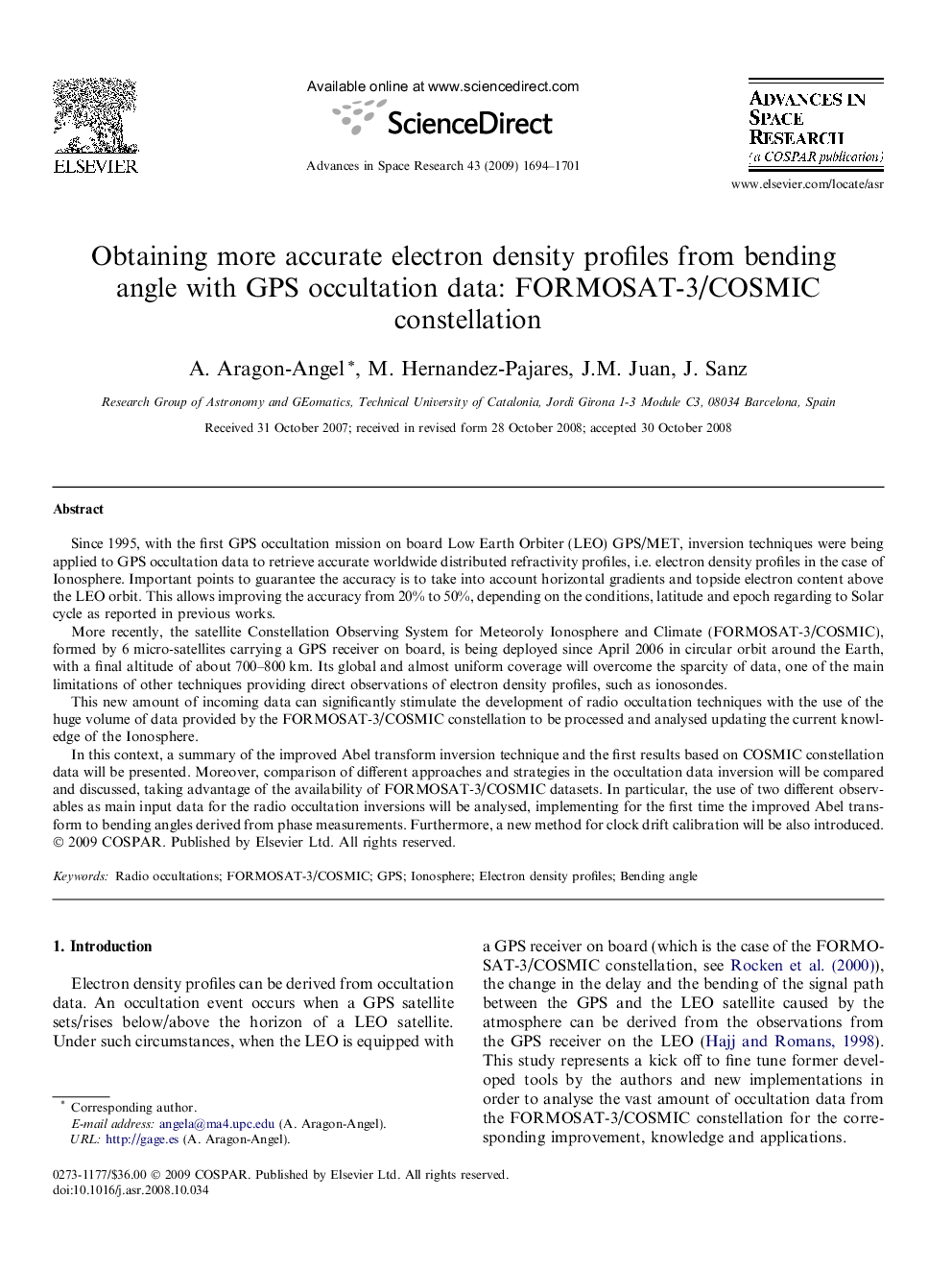| کد مقاله | کد نشریه | سال انتشار | مقاله انگلیسی | نسخه تمام متن |
|---|---|---|---|---|
| 1768209 | 1020218 | 2009 | 8 صفحه PDF | دانلود رایگان |

Since 1995, with the first GPS occultation mission on board Low Earth Orbiter (LEO) GPS/MET, inversion techniques were being applied to GPS occultation data to retrieve accurate worldwide distributed refractivity profiles, i.e. electron density profiles in the case of Ionosphere. Important points to guarantee the accuracy is to take into account horizontal gradients and topside electron content above the LEO orbit. This allows improving the accuracy from 20% to 50%, depending on the conditions, latitude and epoch regarding to Solar cycle as reported in previous works.More recently, the satellite Constellation Observing System for Meteoroly Ionosphere and Climate (FORMOSAT-3/COSMIC), formed by 6 micro-satellites carrying a GPS receiver on board, is being deployed since April 2006 in circular orbit around the Earth, with a final altitude of about 700–800 km. Its global and almost uniform coverage will overcome the sparcity of data, one of the main limitations of other techniques providing direct observations of electron density profiles, such as ionosondes.This new amount of incoming data can significantly stimulate the development of radio occultation techniques with the use of the huge volume of data provided by the FORMOSAT-3/COSMIC constellation to be processed and analysed updating the current knowledge of the Ionosphere.In this context, a summary of the improved Abel transform inversion technique and the first results based on COSMIC constellation data will be presented. Moreover, comparison of different approaches and strategies in the occultation data inversion will be compared and discussed, taking advantage of the availability of FORMOSAT-3/COSMIC datasets. In particular, the use of two different observables as main input data for the radio occultation inversions will be analysed, implementing for the first time the improved Abel transform to bending angles derived from phase measurements. Furthermore, a new method for clock drift calibration will be also introduced.
Journal: Advances in Space Research - Volume 43, Issue 11, 2 June 2009, Pages 1694–1701